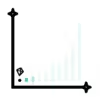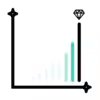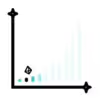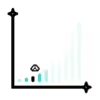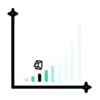The Mystery of Mohs 9.5: Unearthing the Hardest of Minerals
 The Mohs Hardness Scale is a beloved tool among geologists and mineral enthusiasts, ranking minerals from the ultra-soft talc at 1 to the indomitable diamond at 10. This scale, devised by Friedrich Mohs in 1812, allows us to scratch-test minerals to determine their hardness, essentially rating their resistance to scratching. But did you know there are minerals so tough, they flirt with the highest rating? Enter the world of minerals rated at a mind-boggling 9.5!
The Mohs Hardness Scale is a beloved tool among geologists and mineral enthusiasts, ranking minerals from the ultra-soft talc at 1 to the indomitable diamond at 10. This scale, devised by Friedrich Mohs in 1812, allows us to scratch-test minerals to determine their hardness, essentially rating their resistance to scratching. But did you know there are minerals so tough, they flirt with the highest rating? Enter the world of minerals rated at a mind-boggling 9.5!
Discovering the Super-Hard Contenders
Minerals with a Mohs rating of 9.5 are rare gems in the geological world. While corundum sits firmly at 9 and diamond reigns supreme at 10, few minerals are tough enough to bridge this narrow but significant gap. These minerals, almost as hard as diamond, possess remarkable durability and scratch resistance. Though not officially listed in Mohs’ original lineup, research and advanced testing have hinted at the existence of such super-hard minerals.
The Hardest of the Hard: Boron Nitride and Beyond
One prime candidate for the elusive 9.5 rating is cubic boron nitride (cBN). Often synthesized for industrial use, cBN rivals diamond in hardness and thermal stability, making it invaluable for cutting tools and abrasive applications. Another fascinating contender is wurtzite boron nitride, which, under certain conditions, can exceed even diamond in hardness!
Why It Matters
Understanding and identifying minerals with a Mohs rating of 9.5 isn’t just academic; it has practical applications in various industries. These minerals’ extraordinary hardness makes them ideal for high-stress environments, from manufacturing to high-tech gadgets. So next time you’re scratching the surface—literally or metaphorically—remember the minerals that almost rival diamonds in their sheer toughness.


